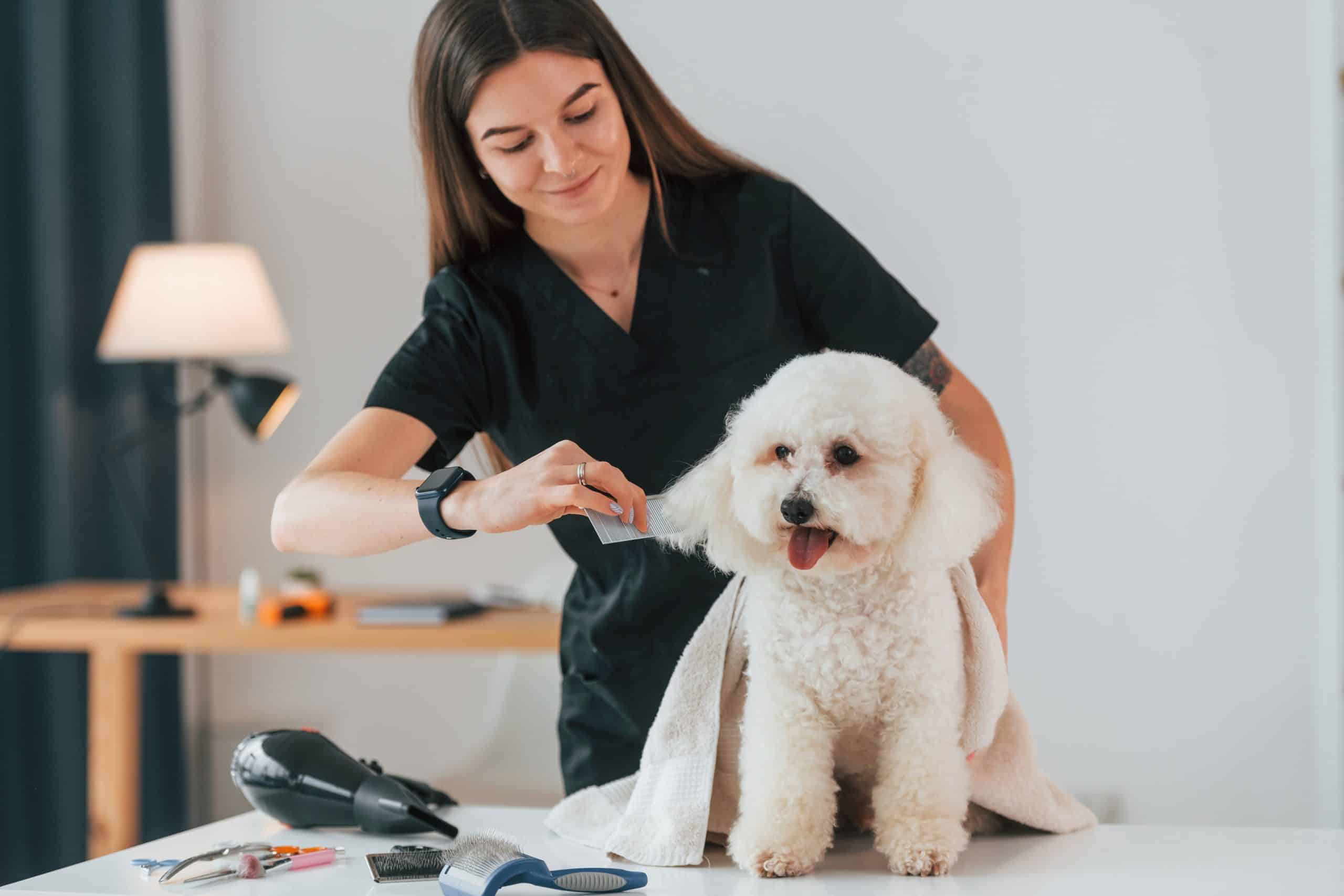What Are the Best Techniques for Grooming a Nervous or Anxious Dog?

Grooming is an essential part of pet care, but for some dogs, especially those who are naturally anxious, it can be a difficult process. A trip to the groomer or even a simple brushing session at home can become a source of stress for both the pet and the owner. However, with the right approach, equipment, and a lot of patience, grooming an anxious dog can become a much more comfortable and even enjoyable experience.
Recognizing Anxiety in Dogs
Before delving into the techniques, it’s essential to recognize the signs of anxiety in dogs. A dog’s behavior can be a clear indicator of their emotional state. If your dog exhibits any of the following signs, it could be because they are feeling anxious: excessive panting, pacing, trembling, excessive barking, and attempts to escape.
Topic to read : How to Build an Outdoor Enclosure for Indoor Cats to Explore Safely?
Knowing your dog’s typical behaviors and recognizing when they are showing signs of anxiety will help you address their needs better. Once you understand that your pet is anxious, you can then begin to implement techniques to calm them down during grooming.
Using Calming Techniques
There are several techniques that you can use to help your anxious dog feel more at ease during grooming. The goal is to make grooming a positive experience for your dog, and this begins by establishing a calm environment.
Also to read : What’s the Best Approach for Teaching a Cat to Accept a Harness and Leash?
- Create a Calming Environment
First and foremost, the environment where the grooming will take place should be quiet and comfortable. Avoid areas with a lot of distractions. Use calming scents, like lavender, to help reduce the stress level. You can diffuse essential oils or use pet-friendly aromatherapy products.
- Positive Reinforcement
An effective method to calm an anxious dog is through positive reinforcement. Reward your dog with treats, praise, or petting during and after grooming. This will help them associate grooming with positive experiences.
- Gradual Introduction to Grooming Tools
Introduce grooming tools slowly, allowing your dog time to get familiar with each one. Show them the tools, let them sniff, and give them treats. Start with short grooming sessions and gradually increase the time as your dog becomes more comfortable.
Choosing the Right Grooming Tools
The right tools can make all the difference in the grooming session. Certain tools are designed to be less stressful for pets, including those who are particularly anxious.
- Brushes and Combs
Choose brushes and combs that are gentle on your dog’s skin and fur. Soft bristle brushes are a good option for most dogs.
- Nail Clippers
Nail trimming can be particularly stressful for anxious dogs. Consider using a grinder instead of clippers, as grinders gradually and gently file the nail down, creating less pressure and noise.
- Shampoos and Conditioners
Sensitive skin shampoos and conditioners can help if your dog experiences anxiety due to discomfort during baths. Look for natural and hypoallergenic products.
Professional Groomers and Vets
Sometimes, despite your best efforts, your anxious dog may still find grooming very stressful. In these cases, it may be best to consult professionals for help.
- Professional Groomers
Professional groomers are trained to handle all types of dogs, including anxious ones. They often have techniques and tools to make the grooming process easier. Look for a groomer who has experience with anxious dogs.
- Vets
Your vet can provide advice based on your pet’s specific needs. In extreme cases, they may recommend medications to help reduce anxiety during grooming.
Training Your Dog for Grooming
Training can be a beneficial part of helping your anxious dog cope with grooming. The goal is to change their negative associations with grooming into positive ones.
- Desensitization
This involves gradually exposing your dog to the grooming process. Start by showing them the tools, then touching their fur with the tools, and finally, using the tools as you would in a grooming session.
- Counter-Conditioning
This involves changing your dog’s emotional response to grooming. Pair the grooming process with something your dog loves, like treats or toys.
Remember, patience is key during this process. It may take time, but your efforts will help make grooming a more enjoyable experience for your pet.
Grooming Sessions at Home
Grooming your anxious dog at home can be a beneficial method if you take the right approach. It is essential to start slowly and make the grooming process a positive experience for your dog.
Establish Regular Grooming Schedules
Having a set schedule for grooming sessions can help your dog feel less anxious. The dog will be expecting the grooming session and will not be surprised or stressed. Start with shorter sessions and gradually increase the time as your dog becomes more comfortable. Always end each session on a positive note, with a treat or praise, to build a positive association.
Use Soothing Sounds
Soft, calming music or white noise can help a nervous dog feel more relaxed during grooming. Be sure to keep the volume low, as loud noises can add to your dog’s stress.
Take Breaks
If your dog shows signs of discomfort or stress during a grooming session, take a break. Continue only when your dog has calmed down. This will help in preventing the buildup of negative associations with grooming.
Make it a Bonding Experience
Use the grooming session as an opportunity to strengthen your bond with your pet. Speak in a gentle, soothing tone and provide plenty of affection. This will not only help to calm your dog but also make the experience more enjoyable for both of you.
Conclusion: Turning Grooming into a Pleasurable Experience
It’s undeniable that grooming an anxious dog can be challenging. But with patience, understanding, and the right approach, you can turn the grooming process into a positive, stress-free experience for your pet.
Remember to be patient and consistent. The key is to make your dog as comfortable as possible. Take things slow, create a calm environment, and use positive reinforcement. Also, keep in mind that it’s okay to seek professional help if needed. Grooming salons and vets have expertise in handling dog anxiety and can provide useful advice and services.
With time, your dog will start to associate grooming with positive experiences and rewards, reducing their anxiety and transforming grooming from a source of stress to a source of joy.
Most importantly, think of grooming not as a chore, but as an opportunity to bond with your beloved pet. After all, our pets deserve the best care possible, and that includes their grooming. So, let’s turn that dreaded grooming session into a relaxing and enjoyable spa day for your furry friend!
